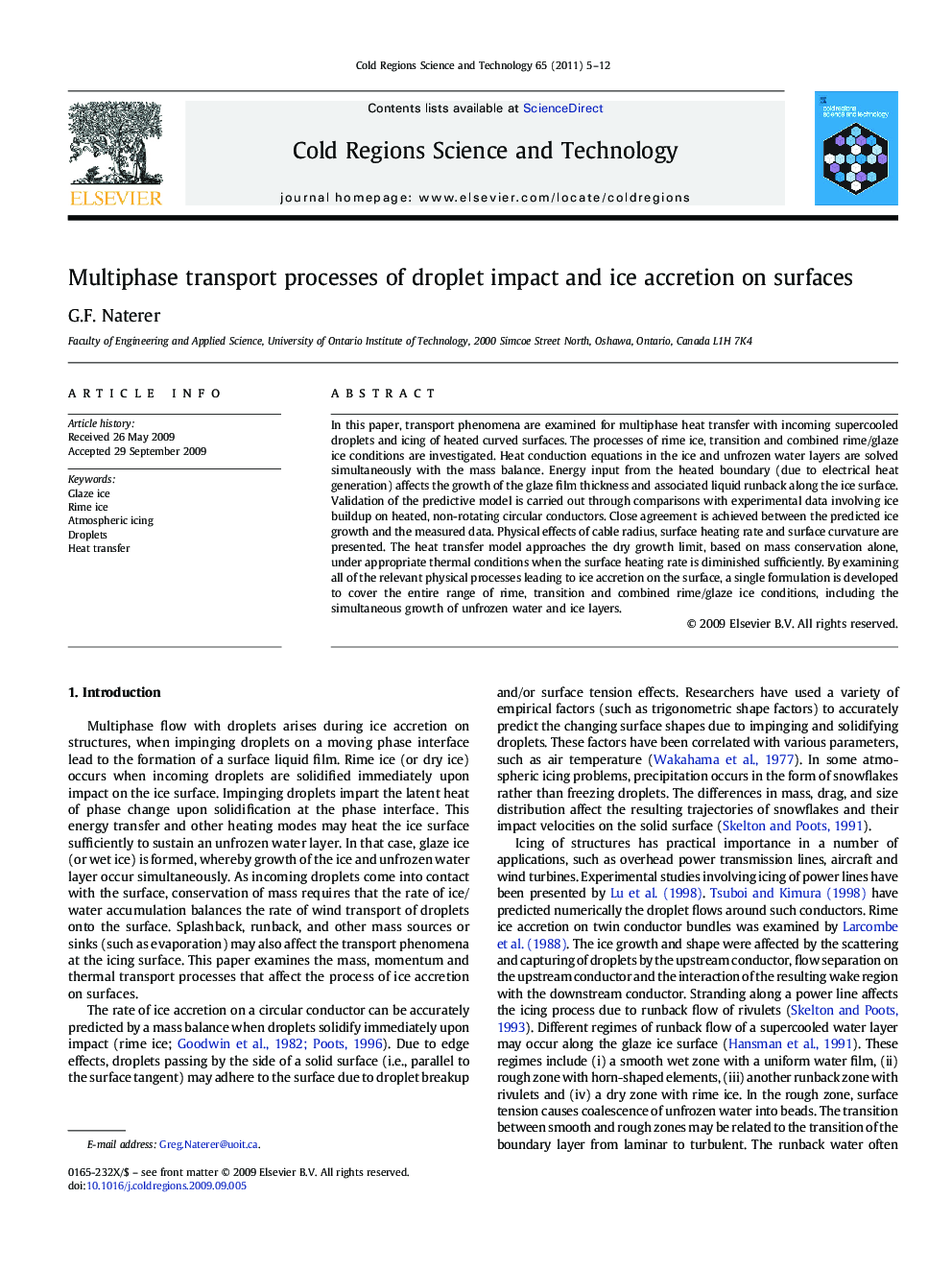| Article ID | Journal | Published Year | Pages | File Type |
|---|---|---|---|---|
| 4676079 | Cold Regions Science and Technology | 2011 | 8 Pages |
In this paper, transport phenomena are examined for multiphase heat transfer with incoming supercooled droplets and icing of heated curved surfaces. The processes of rime ice, transition and combined rime/glaze ice conditions are investigated. Heat conduction equations in the ice and unfrozen water layers are solved simultaneously with the mass balance. Energy input from the heated boundary (due to electrical heat generation) affects the growth of the glaze film thickness and associated liquid runback along the ice surface. Validation of the predictive model is carried out through comparisons with experimental data involving ice buildup on heated, non-rotating circular conductors. Close agreement is achieved between the predicted ice growth and the measured data. Physical effects of cable radius, surface heating rate and surface curvature are presented. The heat transfer model approaches the dry growth limit, based on mass conservation alone, under appropriate thermal conditions when the surface heating rate is diminished sufficiently. By examining all of the relevant physical processes leading to ice accretion on the surface, a single formulation is developed to cover the entire range of rime, transition and combined rime/glaze ice conditions, including the simultaneous growth of unfrozen water and ice layers.
